#tony nardi
Explore tagged Tumblr posts
Text
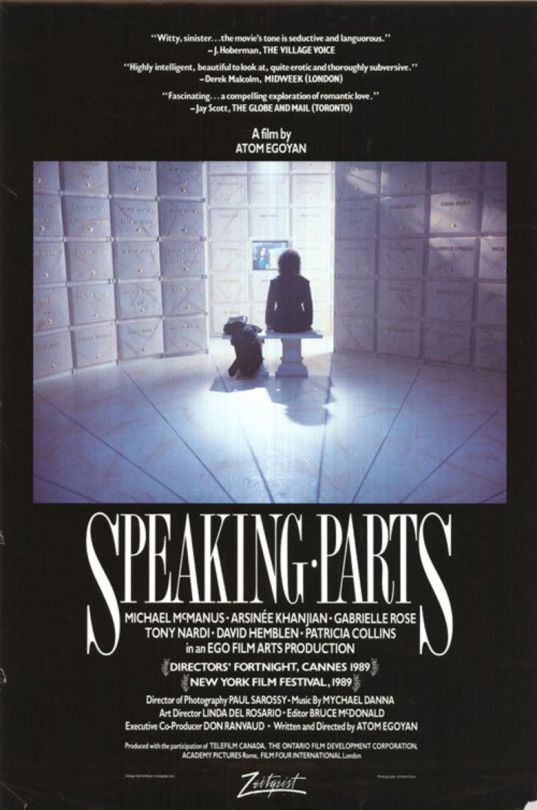
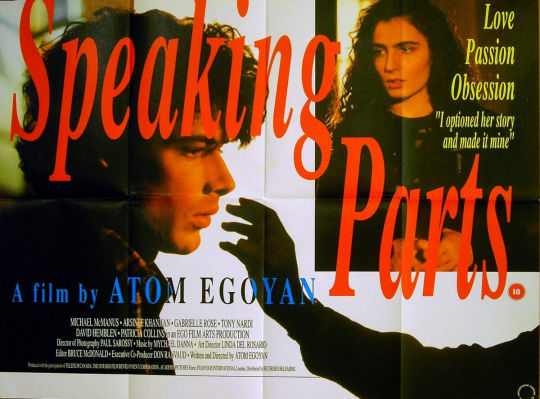
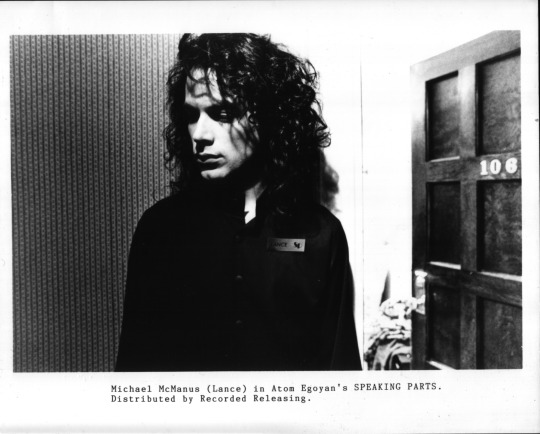
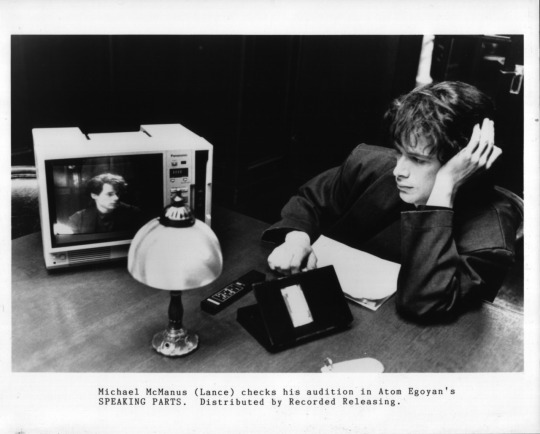
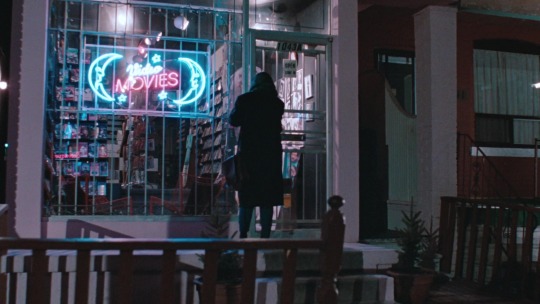
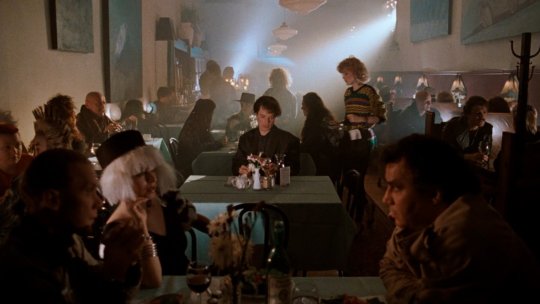
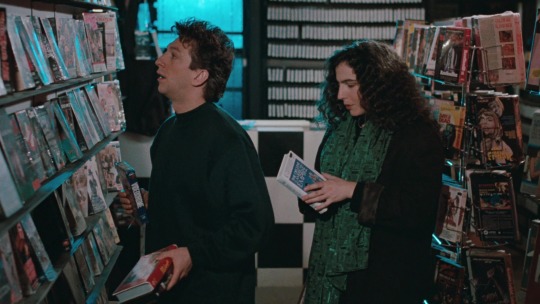

Speaking Parts (1989) Atom Egoyan
February 13th 2024
#speaking parts#1989#atom egoyan#michael mcmanus#arsinée khanjian#gabrielle rose#tony nardi#david hemblen#patricia collins
1 note
·
View note
Text
Over the summer of 1976, thirty-six bombs detonate in the heart of Cleveland while a turf war raged between Irish mobster Danny Greene and the Italian mafia. Based on a true story, Kill the Irishman chronicles Greene’s heroic rise from a tough Cleveland neighborhood to become an enforcer in the local mob. Credits: TheMovieDb. Film Cast: Danny Greene: Ray Stevenson John Nardi: Vincent D’Onofrio Joe Manditski: Val Kilmer Shondor Birns: Christopher Walken Joan Madigan: Linda Cardellini Mikey Mendarolo: Tony Darrow Ray Ferritto: Robert Davi Grace O’Keefe: Fionnula Flanagan Jerry Merke: Bob Gunton Art Sneperger: Jason Butler Harner Keith Ritson: Vinnie Jones Jack Licavoli: Tony Lo Bianco Ellie O’Hara: Laura Ramsey Mike Frato: Steve Schirripa Tony Salerno: Paul Sorvino Leo “Lips” Moceri: Mike Starr William “Billy” McComber: Marcus Thomas Frank Brancato: Vinny Vella Valet: Brian Balzerini Young Danny Greene: Cody Christian Young Billy McComber: Dante Wildern Tony Lupero: Sean O’Reily Vic Centauro: Vincent Rogo Angelini Tommy Sinito: Grant Krause Joe Buka: Jeff Chase Stan Gilroy: Jim Porterfield Undercover Cop: Jeff Wolfe Film Crew: Director: Jonathan Hensleigh Executive Producer: Tara Reid Casting: Mary Vernieu Production Design: Patrizia von Brandenstein Director of Photography: Karl Walter Lindenlaub Editor: Douglas Crise Executive Producer: Arthur M. Sarkissian Visual Effects Supervisor: Chris Ervin Producer: Al Corley Producer: Eugene Musso Unit Production Manager: Bart Rosenblatt Producer: Tommy Reid Casting: Juan Carlos Cantu Screenplay: Jeremy Walters Book: Rick Porrello Executive Producer: Jonathan Dana Costume Design: Melissa Bruning Original Music Composer: Patrick Cassidy Music Supervisor: John Bissell Production Supervisor: Michael D. Jones Art Direction: Gary Baugh Script Supervisor: Dug Rotstein Still Photographer: Kim C. Simms Set Decoration: Joan MacFarlane Production Sound Mixer: Beau Williams Second Assistant Director: Phil Robinson Stunt Double: Cassandra McCormick Movie Reviews: Kenneth Axel Carlsson: This is the story of the irishman, Danny Greene (Ray Stevenson), a corrupt union man, who ended up as sort of a Robin Hood figure of Cleveland. This is the story of how he rose in the ranks, making countless of enemies along the way. This is also the story of how they tried to kill him, but failed. I’ve never heard of Danny Greene, but the movie paints a nice realistic picture of the 1970s. This is not a pleasant world, but one where everyone is trying to get their piece of the cake. Danny himself is a hard one to figure out, is he good, is he bad? The one moment he helps out a friend in need, the next… he is killing people. I kinda like the fact that he is a person with both sides to him, allowing us to make up our own mind about him. Life is never as simple as most movies would like us to think it is. The movie itself is a little messy, and I had expected a bit more from the cast, but of course, this is a movie based on actual events and characters, and of course that means that they can’t change too much. In minor roles we find Val Kilmer and Christopher Walken, both excellent actors that tend to make quirky and interesting characters, but not so much here. Last words… a solid movie that gives us some insight into a man who really lived and breathed. It has some heart, for sure, but ain’t all that interesting when it comes down to it. I probably won’t ever see it a second time, but I definitely survived seeing it once.
1 note
·
View note
Text

#Costez - Telgate (Bergamo), musica e divertimento nel weekend: 23/2 Zarro Night, 24/2 Dbg, Asia Nardi + Flirt
E' un weekend strapieno di musica al #Costez - Telgate (Bergamo), tutto da vivere venerdì 23 e sabato 24 febbraio 2024. Si parte il 23/2 con una scatenata Zarro Night, l'evento perfetto per far tardi con gli amici scatenandosi sul dancefloor con la musica più divertente che c'è.
La Zarro Night è un evento, un party, una festa senza regole in cui scatenarsi al ritmo di musica Dance. Dj, Vocalist, Mc e animatrici coinvolgono il pubblico in sala con uno spettacolo che propone i più grandi successi dance, remix esclusivi e produzioni originali…sempre sul pezzo! La Zarro Night è un'esperienza unica, una serata in discoteca che è più simile a un concerto…in cui gli unici protagonisti sono gli ospiti di #Costez - Telgate (Bergamo)
E che succede al #Costez - Telgate (Bergamo) la sera dopo, sabato 24 febbraio '24? C'è un doppio evento tutto da vivere. In Green Room al mixer sono Dbg, Asia Nardi, mentre alla voce c'è Tony Voice. Ecco invece poi in Gold Room il party format Flirt. In Gold Room, tra l'altro, si ascolta live music già dalle 20:30 e fino all'una.
///
Costez è un brand simbolo di divertimento, ritmo, party e notti passate a ridere con gli amici. Creato da Paolo e Francesco Battaglia nel 2007, nel tempo è cresciuto facendo scatenare club, discobar, festival in diverse regioni italiane. Oggi prende vita al #Costez di Telgate (BG), ovvero nella grande disco Nikita e all'Hotel Costez di Cazzago (BS), uno scatenato dj bar. Chi balla con Costez lo fa al massimo con ottimi dj, show di qualità, scenografie, servizio sempre curati e soprattutto con uno staff di ragazzi che mentre lavorano si divertono… o viceversa.
///
#Costez Future Club - Telgate (BG) c/o Nikita
Via dei Morenghi 2 - Telgate (BG) A4: Grumello
Dalle 24 alle 4, ogni venerdì, sabato e prefestivi
Domenica pomeriggio dalle 15 alle 19
info: 3480978529 (Bobe)
Ingresso a pagamento con consumazione
Web App: https://costez.club/
Instagram.com/costez_official
0 notes
Text
Amazing Bill Evans music playlist: 30 tracks (Best jazz collection)
Amazing Bill Evans music playlist: 30 tracks (Best jazz collection) Best Sheet Music download from our Library.Track List: Please, subscribe to our Library. Thank you! Bill Evans biographyFirst recordings 1960s 1970s
Amazing Bill Evans music playlist: 30 tracks (Best jazz collection)

https://www.youtube.com/watch?v=qjKtO7cus4U Track List: 0:00:00 Bill Evans Trio - My Foolish Heart 0:04:56 Bill Evans Trio - Like Someone In Love 0:11:22 Bill Evans Trio - When I Fall In Love 0:16:15 Bill Evans Trio, Stan Getz - But Beautiful 0:22:01 Bill Evans Trio - Polka Dots And Moonbeams 0:27:01 Bill Evans - I Loves You Porgy 0:33:04 Bill Evans Trio - I Wish I Knew 0:37:45 Bill Evans - The Peacocks 0:43:58 Bill Evans Trio - Young And Foolish 0:49:51 Bill Evans, Bob Brookmeyer - As Time Goes By 0:56:46 Bill Evans Trio - Waltz For Debby 1:03:48 Bill Evans Trio - Alice In Wonderland 1:12:24 Bill Evans Trio - Autumn Leaves 1:18:22 Bill Evans Trio - Danny Boy 1:22:06 Bill Evans - Here's That Rainy Day 1:27:28 Bill Evans - Midnight Mood 1:32:46 Bill Evans - Emily 1:37:39 Bill Evans - Peace Piece 1:44:20 Bill Evans - Never Let Me Go 1:58:47 Bill Evans, Jim Hall - Skating In Central Park 2:04:12 Bill Evans, Jim Hall - Romain 2:09:37 Bill Evans - Love Theme From 'Spartacus' 2:14:47 Bill Evans Trio - Spring Is Here 2:19:53 Bill Evans Trio - My Romance 2:21:55 Bill Evans Trio - I'll See You Again 2:25:51 Bill Evans Trio - Come Rain Or Come Shine 2:29:11 Tony Bennett, Bill Evans - You Must Believe In Spring 2:35:03 Bill Evans Trio - Nardis 2:40:55 Bill Evans - Soiree 2:44:22 Bill Evans - Comrade Conrad
Bill Evans biography
Bill Evans ( Plainfield , August 16 , 1929 - Fort Lee , September 15 , 1980, born William John Evans , was an American jazz pianist and composer. Bill Evans was born in New Jersey to Harry L. Evans, born in Wales and Mary Saroka Evans, born in Rusyne, both lovers of music. They make him study piano and, as a second instrument, violin (which he will give up after two years) and then flute . When he was a teenager he began to be interested in jazz , and in particular by Bud Powell, Nat King Cole , George Shearing and Lennie Tristano; he plays in orchestras as a local amateur . Bill Evans continued his musical studies at Southern Louisiana College, graduating in 1950. After a brief stint in clarinetist Herbie Fields' orchestra, he spent three years in the Army as a flautist , stationed at Fort Sheridan. It will preserve for a long time a bitter memory of these years. Demobilized in 1954, he began playing and recording with New York's minor orchestras (the best known being the "variety" orchestra led by Jerry Wald), while taking composition classes at the Mannes School of Music. First recordings In 1955, he was noticed by the composer and theoretician of the "lydian concept" George Russell who invited him to record the album The Jazz Workshop with his "jazz smalltet" (1956) and then the title All about Rosie on the collective album Brandeis Jazz Festival (1957). Russell and Evans would later reunite for other albums: New York, NY (1959), Jazz in the Space Age (1960), Living Time (1972). In September 1956, Bill Evans recorded under his own name, for the Riverside label (with producer Orrin Keepnews), the trio New Jazz Conceptions with Teddy Kotick on double bass and Paul Motian on drums. If Bill Evans had not yet found the interaction that will characterize his approach to the jazz trio, he already demonstrates his innovative harmonizing technique on this album. After this album and his work with Russell made him known, Bill Evans became an in-demand studio musician and many musicians called on his services, including Tony Scott, Don Elliott, Eddie Costa, Jimmy Knepper, Helen Merrill, Sahib Shihab and Charles Mingus . Alongside John Coltrane and Cannonball Adderley ' regular sextet, Between February and November 1958, he was part of Miles Davis . In 1959, the trumpeter called him back for the recording of the Kind of Blue album . Miles Davis has always recognized the importance of Evans' contribution to this emblematic record of modal jazz . After this interlude with Miles Davis , Bill Evans resumed an intense career as a sideman - which did not stop until 1963, the date of his contract with Verve - recording, among others, with Cannonball Adderley , Michel Legrand , Art Farmer, Chet Baker , Lee Konitz , John Lewis, Oliver Nelson, Kai Winding , JJ Johnson and Bob Brookmeyer. At the same time, although he did not have a regular trio, he recorded records with this formula under his own name: Everybody digs Bill Evans (1958) and On Green Dolphin Street (1958 – unreleased at the time). 1960s In 1959, he formed a regular trio with bassist Scott LaFaro and drummer Paul Motian. The three partners, breaking with the tradition in which the double bass player and the drummer were limited to an accompanying role, dedicate themselves to an authentic "three-way improvisation". It is this "interaction" – this constant synergy between the three musicians – that makes this trio specific and modern. The three recorded four albums: Portrait in Jazz (1959), Explorations (1961) and especially two legendary albums from the same session at the Village Vanguard in New York: Waltz for Debby and Sunday at the Village Vanguard. Scott LaFaro died in a car accident just ten days after recording these records. Deeply affected by the death of LaFaro, Bill Evans, although he continues his career as an accompanist (albums as an accompanist for Mark Murphy , Herbie Mann, Tadd Dameron , Benny Golson …), does not record anything as a trio during almost a year Under his name, he recorded, in duo with Jim Hall, the album Undercurrent . It wasn't until May 1962 that he found himself in the studio as a trio, this time with Chuck Israels on double bass and Paul Motian on drums. What comes out of these sessions are the albums How My Heart Sings! and Moon Beams . In late 1962 - early 1963, he recorded his last albums for the Riverside label: Interplay (as a quintet with Freddie Hubbard and Jim Hall), Loose Blues (as a quintet with Zoot Sims and Jim Hall, unreleased at the time ), At Shelly's Manne-Hole (as a trio with Chuck Israels and Larry Bunker), and 13 solo tracks ( The Solo Sessions: Volume 1 & 2 - unedited at the time). Breaking album time with his usual trio, he recorded in 1962 for Verve trio album , while still under contract with Riverside, the Empathy of which Shelly Manne was co-leader. Evans signs with Verve-MGM. For Verve , Bill Evans will continue to record with his usual trios, but Creed Taylor, then producer of the label, will push him to diversify his production: albums with other stars of the brand ( Stan Getz , Gary McFarland…), solo, re-recording, with symphony orchestra… Between 1962 and 1969, the personnel of Evans' "regular" trio was reworked quite frequently. Between 1962 and 1965, Chuck Israels was occasionally replaced on double bass by Gary Peacock ( Trio '64 ) and veteran Teddy Kotick. From 1966 and for 11 years, Eddie Gómez will occupy the position of double bass player. The successive drummers were Larry Bunker ( Live ( 1964 ), Trio '65 ), Arnold Wise ( Bill Evans at Town Hall , 1966), Philly Joe Jones ( California, Here I Come , 1967), Jack DeJohnette ( Bill Evans at Montreux Jazz ). Festival , 1968) and, more briefly, Joe Hunt and John Dentz. In 1969, drummer Marty Morell joined the trio, remaining until 1975. During this period, on European tours, Evans sometimes travels without his usual accompanists and then turns to "local" musicians: Palle Danielsson, Niels-Henning Ørsted Pedersen, Rune Carlsson (1965), Alex Riel (1966)… During his Verve period , Evans recorded with different formulas than his "usual trio". He recorded Alone (1968) . He re-recorded Conversations with Myself (1963), then Further Conversations with Myself (1967). With string orchestra (conducted by Claus Ogerman) and trio, Bill Evans trio with symphony orchestra (1965). With other musicians, Gary McFarland (1962), Stan Getz (1964), Monica Zetterlund ( Waltz for Debby , 1964), Jim Hall ( Intermodulation , 1966), Shelly Manne ( A Simple Matter of Conviction - 1966), Jeremy Steig ( What's New , 1969). Here ends the "Verve Period", with the album From Left to Right (1970), a recording on the border between light music and jazz, where Bill Evans, accompanied by a string orchestra, uses the electric piano for the first time " Fender Rhodes ". It should be noted that Evans' last albums for Verve are no longer produced by Creed Taylor but by Helen Keane (Evans' artistic agent since 1962). From the end of the contract with Verve , it is Helen Keane who will act as "coach" of the pianist's career. It will be the producer of the records that Evans will record for Columbia , CTI Records, Fantasy and Warner Bros. 1970s Between 1969 and 1975, Bill Evans performed mainly with Eddie Gómez and Marty Morell. This trio recorded many albums: among others, Jazzhouse , You're Gonna Hear From Me (1969), Montreux II (1970), The Bill Evans Album (1971), The Tokyo concert , Half Moon Bay (1973), Since We Met , Re: Person I Knew, Blue in green (1974). During this period, Bill Evans participates in two recordings quite far removed from his usual productions: Living Time , an experimental composition for piano and large ensemble by George Russell (1972) and Symbiosis (1974), a concerto for piano and orchestra by "Third stream music" composed by Claus Ogerman. He also recorded at this time two duet albums with Eddie Gómez ( Intuition - 1974, Montreux III - 1975) and one solo ( Alone (Again) - 1975). Evans also recorded two sessions ( The Tony Bennett: Bill Evans Album - 1975, Together again - 1976) with crooner Tony Bennett . Finally, Evans signs his last record in re-recording, New Conversations (1978). In 1976, Marty Morell was replaced on drums by the understated but subtle Eliot Zigmund. This will remain the last rhythm that will be perfectly integrated into the pianist's universe. The trio thus composed finds a second wind and records I Will Say Goodbye (1977, published in 1980, after the death of the pianist) and the elegiac You Must Believe in Spring (1977, published in 1981). The three men also recorded Crosscurrents (1977) with Lee Konitz and Warne Marsh. Eddie Gómez left Evans in 1978. After trying numerous double bass players (Michael Moore, Michel Donato…), Evans hired the young Marc Johnson. and Larry Schneider was recorded It was around this time that the Affinity quintet album with Toots Thielemans . In 1979, he reunited with Larry Schneider but this time with Tom Harrell , for another quintet album, We will meet again . For a brief period, "veteran" Joe Philly Jones returned to fill in as drummer, before Evans hired another young musician, Joe LaBarbera. There are no studio recordings of this definitive trio. On the other hand, it was recorded a lot in discos or in concerts ( Homecoming , The Paris concert. ed. 1 & 2 , Turn out the stars: the final recordings of Village Vanguard , The Last Waltz , Consecration …). All these recordings were only published after the death of the pianist. The music of this trio is the "swan song" of the pianist. He performed for the penultimate time in August 1980 at the Molde Jazz Festival. On September 15, 1980, at the age of fifty-one, with poorly treated hepatitis , his body exhausted by addiction too long a drug ( heroin in the 60s and 70s, cocaine at the end of his life), Bill Evans died as a result of internal bleeding. Discography Bill Evans' discography is particularly important. In addition to "official" recordings for labels such as Riverside, Verve , CTI, Columbia , Fantasy and Warner Bros. Records , there are a significant number of more or less official albums. Musical compositions B minor waltz Bill's belle (àlies Just a beginner in love ) Bill's hit tune Blue in Green (co-author Miles Davis ) C minor blues chase Carnival Catch the wind (àlies Get yourself another fool ) Children's play song Chromatic tune Comrade Conrad (aka Theme for Crest ) Displacement Epilogue Five For Nenette (alias In April ) Fudgesicle built for two Fun ride Funkallero Funny man G waltz Here's something to you Hollywood (written with Claus Ogerman ) Interplay It's love, it's Christmas It must be love * Knit for Mary F. Laurie (alias The dream ) Letter To Evan Loose blues Maxine My bells NYC's: no lark One for Helen Only child The opener Orbit (alias Unless it's you ) Peace Piece Peri's scope Prologue Re: person I knew Remembering the rain Show type tune (alias Tune for a lyric ) A simple matter of conviction Since we met Song for Helen Story line Sugar plum * (coautor John Court) Theme: what you gave (àlies Don't count your dreams till they come true! ) There came you These Things Called Changes 34 skidoo Tiffany Time remembered Turn out the stars Twelve tone tune (alias TTT ) Twelve tone tune two (aka TTTT ) The two lonely people (àlies The man and the woman ) Very early Walkin' up Waltz for Debby Waltz in Eb We will meet again Yet ne'er broken Your story Read the full article
1 note
·
View note
Photo









Speaking Parts (1989)
#speaking parts#atom egoyan#michael mcmanus#arsinee khanjian#gabrielle rose#tony nardi#talks#couldve been a better selection of pics with this one tbh but oh well#i dont really feel like skimming it to get them
23 notes
·
View notes
Photo





Atom Egoyan, {1989} Speaking Parts
#screens on screen#film#gif#atom egoyan#speaking parts#arsinee khanjian#gabrielle rose#michael mcmanus#tony nardi#1989#colour#monitors#tv#flowers#roses#canada#male filmmakers#films#1980s#.gif
11 notes
·
View notes
Text







Born to Be Blue (2015)
Director - Robert Budreau, Cinematography - Steve Cosens
“Time gets wider, you know. Not just longer.”
#scenesandscreens#chet baker#ethan hawke#robert budreau#steve cosens#carmen ojogo#tony nardi#tony nappo#barbara mamabolo#callum keith rennie#carmen ejogo
54 notes
·
View notes
Photo

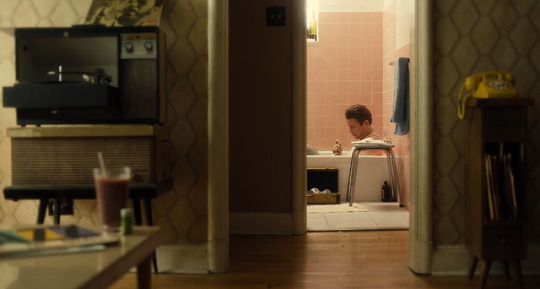

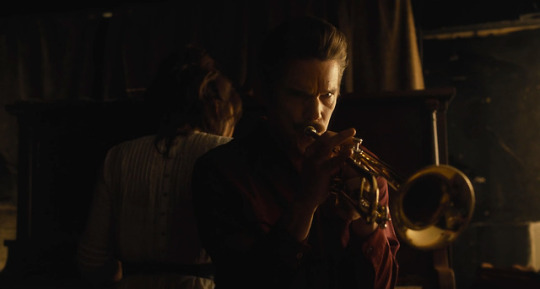
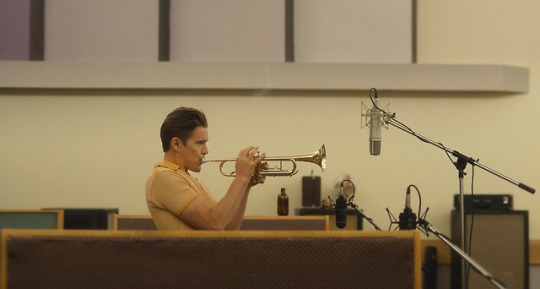
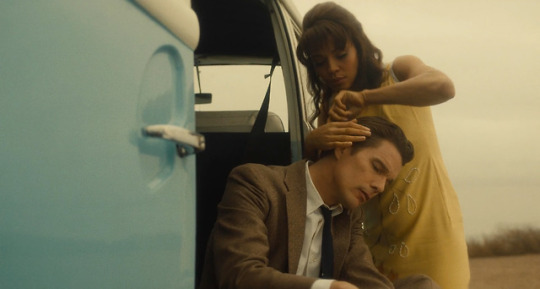
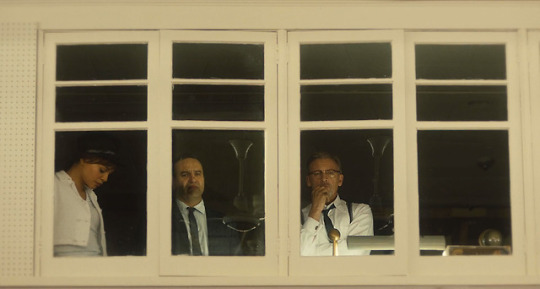
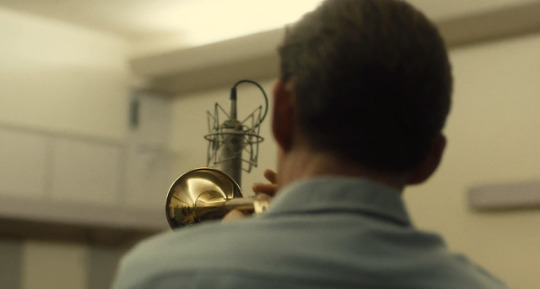

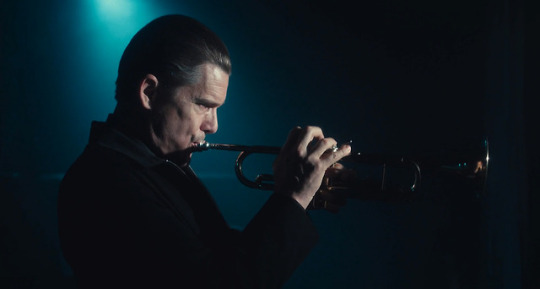
‘Born to be Blue’, Robert Budreau (2015) Time gets wider, you know. Not just longer.
#born to be blue#robert budreau#2015#chet baker#jazz#movie#film#cinema#cinematography#trumpet#Ethan Hawke#Carmen Ejogo#Callum Keith Rennie#Stephen McHattie#Janet-Laine Green#Tony Nappo#Janine Theriault#Tony Nardi#Katie Boland#Dan Lett#Steve Cosens#music#drama#LA#heroin#drugs#chet#baker#jazz music#biopic
603 notes
·
View notes
Note
I saw you post some book recs but cldnt find them again! Would you have a little list of recommendations you could share <3
Hi! So the books I recommended in that tag game were:
This All Come Back Now: An Anthology of First Nations Speculative Fiction, edited by Mykaela Saunders
Friday Black, Nana Kwame Adjei-Brenyah
The Book of Dirt, Bram Presser
The Dispossessed, Ursula K. Le Guin
Cosmogramma, Courttia Newland
Unlimited Futures: Speculative, Visionary Blak+Black Fiction, edited by Rafeif Ismail and Ellen van Neerven
But I'll also add some more seeing as this is a general list of recommendations, and I'll recommend ones you won't usually see spread around tumblr (because they're Blak authors)
Dark Emu by Bruce Pascoe
The Kadaitcha Sung by Sam Watson (if you can find it -- it's out of print and a rare book, but there may be some online versions you can sus out)
Another Day in the Colony by Chelsea Watego
Terra Nullius by Claire G. Coleman
Kindred by Kirli Saunders
How to Make a Basket by Jazz Money
False Claims of Colonial Thieves by Charmaine Papertalk Green and John Kinsella
The White Girl by Tony Birch
The Yield by Tara June Winch
Cartwarra or What?: Selected Poems and Short Stories by Alf Taylor
Song of the Crocodile by Nardi Simpson
Blacklight: Ten Years of First Nations Storytelling edited by Hannah Donnelly and Sweatshop
Flock: First Nations Stories Then and Now edited by Ellen van Neerven
#this is a haphazard list#more or less directly taken from looking up at my bookshelf and trying to give a decent selection of Blak authors for you to peruse through#answered#anonymous
62 notes
·
View notes
Note
hi! more recs for Indigenous Australian authors (great recs by the other person btw ❤) are Tara June Winch, Ellen van Neerven, Gary Lonesborough, Anita Heiss and Nardie Simpson for novels and short stories. Tony Birch also writes novels but he's recently published some poetry too. also cannot rec the poetry in Evelyn Araluen's Dropbear enough! Blackfulla Bookclub is a wonderful instagram account showcasing First Nations authors around the world if you're also interested. for Maori authors, you may also like to check out Keri Hulme's work!
jotting all of it down

18 notes
·
View notes
Video
youtube
Bill Evans - Live in Paris vol. I-II-III (1972 Full Album)
This compilation collects the complete February 6, 1972 concert by the Bill Evans Trio that was first aired by A la Masion de la Radio in Paris and subsequently issued on two individual CDs by France's Concert.
Personnel: Bill Evans (p) Eddie Gómez (bs) Marty Morrell (dr) Released: January 10, 2006 Recorded: February 6, 1972
CD1 0:00 Présentation André Francis 1:35 Re : Person I Knew (Bill Evans) 10:39 Turn Out The Stars (Bill Evans) 16:01 Gloria's Step (Scott LaFaro) 24:48 Two Lonely People (Bill Evans) 33:21 Waltz For Debby (Bill Evans) 42:21 What Are You Doing The Rest Of Your Life (M. Legrand)
CD2 47:58 Twelve Tone Tune (Bill Evans) 55:38 Sugarplum (Bill Evans) 1:04:25 Quiet Now (Denny Zeitlin) 1:10:02 Very Early (Bill Evans) 1:15:37 Autumn Leaves (Joseph Kosma) 1:19:53 Time Remembered (Bill Evans) 1:26:31 My Romance (Lorenz Hart, Richard Rodgers) 1:37:14 Someday My Prince Will Come (Frank Churchill)
CD3 1:43:50 Elsa (E. Zindars) 1:51:12 Detour Ahead (Ellis, Frigo, Carter) 1:56:42 34 Skidoo (B. Evans) 2:03:05 Alfie (Bacharach, David) 2:08:14 Peri's Scope (B. Evans) 2:17:19 Blue'n Green (B. Evans, M. Davis) 2:21:25 Emily (J. Mandel) 2:28:10 Who Can I Turn To (Newley, Bricusse) 2:34:45 Some Other Time 2:40:04 Nardis (M. Davis) 2:51:44 Waltz for Debby (B. Evans)
This compilation collects the complete February 6, 1972 concert by the Bill Evans Trio that was first aired by A la Masion de la Radio in Paris and subsequently issued on two individual CDs by France's Concert. The pianist, joined by bassist Eddie Gomez and drummer Marty Morell, is in top form throughout the performance, even if the first half of the concert is a bit laid-back for Evans. But drawing from a walk of material, including numerous originals, there's also the haunting "Turn Out the Stars" and the bittersweet "The Two Lonely People," on which the trio gathers steam in the second half, with a wild romp through Evans' demanding "Twelve Tone Tune" and a delightfully breezy treatment of "Very Early" (showcasing Gomez), along with a moving rendition of Denny Zeitlin's gorgeous requiem "Quiet Now" among the highlights. The final track is from a Yugoslavian jazz festival recorded a few months later and previously issued on the Enja compilation Live at the Festival with British drummer Tony Oxley in Morell's place. Evidently due to lack of rehearsal and familiarity working with Evans, Oxley never really blends in very well with the pianist and Gomez in the extended workout of "Nardis." But due to the excellent performances by Evans and Gomez, this is a rewarding disc that returns once rare music to print.
3 notes
·
View notes
Text
Thank you, @oblakom for tagging me! ;-)
stars or clouds / Tony Stark or Steve Rogers / buzzfeed unsolved or buzzfeed worth it / lavender or rose / chocolate or vanilla / latte or americano Caffè / police procedural shows or hospital shows / fast zombies or slow zombies / modern films or classic films / musicals or plays / Hamilton or In the Heights Ehm...what?! / blue lightsaber or green lightsaber / hats or headbands / Queen or Elton John / multicolored lights or white lights / pastels or neons / flowers or succulents / log cabin or hotel / sprinkles or cookie crumbs / ghosts or and aliens neither / single book or book series / brunch or dinner / snow or leaves / jean jacket or leather jacket / tea cup or mug / galaxies or constellations
So, I’ll tag @veronica-nardi , @ili91-efp @nekowhitemoon @pettirossodestate whoever whishes to take part into this :)
2 notes
·
View notes
Photo







King - Showcase - 4/17/2011 - 5/25/2012
Crime Drama (21 episodes)
Running Time: 60 minutes
Stars:
Amy Price-Francis as Detective Staff Sergeant Jessica King
Gabriel Hogan as Danny Sless
Tony Nardi as Police Chief Peter Graci
Suzanne Coy as Detective Eleni Demaris (season 1)
Zoe Doyle as Detective MK Gordon (season 1)
Aaron Poole as Detective Jason Collier (season 1)
Alan van Sprang as Detective Sergeant Derek Spears
Rossif Sutherland as Detective Pen Martin (season 2)
Karen Robinson as Detective Ingrid Evans (season 2)
Ali Kazmi as Suril Sharma
Zoie Palmer as Angela Gilbert
Jesse Bond as Roy Gilbert
#King#TV#Crime Drama#2000's#Showcase#Amy Price-Francis#Gabriel Hogan#Tony Nardi#Suzanne Coy#Zoe Doyle#Aaron Poole#alan van sprang
0 notes
Photo

365 Day Movie Challenge (2017) - #244: Speaking Parts (1989) - dir. Atom Egoyan
With Speaking Parts, Atom Egoyan crafted yet another of his haunting meditations on obsession, time and the different forms of memory that exist both in the mind and in the everlasting preservation provided by film/video images. As in later films like The Adjuster (1991) and Exotica (1994), Speaking Parts finds eroticism in desires that are “wrong,” whether they are societal taboos or because they are perceived as unusual and/or illicit for some other reason. One of Egoyan’s specific obsessions, video voyeurism, is on manifests in many iterations in Speaking Parts. The overall result is not entirely as successful as in those aforementioned films or in other works like The Sweet Hereafter (1997) and Felicia’s Journey (1999), but Speaking Parts is nevertheless essential for fans of Egoyan’s career.
Taking place primarily in a Toronto hotel, much of Speaking Parts’ plot focuses on a socially awkward maid, Lisa (Arsinée Khanjian), who is obsessed with her co-worker, Lance (Michael McManus), an aspiring actor who has had a lot of work as a film extra. Lisa thinks of Lance as a movie star, even though he has never played a role with dialogue. (Lisa and Lance could be described as each other’s doppelgängers. They have similar appearances, particularly because they have nearly identical hairstyles; they are also characters in search of their own voices, both figuratively and literally.) A “speaking part” finally comes along for him when a screenwriter, Clara (Gabrielle Rose), offers him a character in her new film, in which he would essentially be playing her late brother (Franco Tata), who died tragically some years earlier. The brother’s image is revisited constantly in the film, the specter that hangs over every decision that Clara makes.
At the same time, Lisa befriends Eddy (Tony Nardi), a video rental store clerk who moonlights as a wedding videographer. Lisa finds that Eddy’s side profession brings him to mysterious sex parties, one of which she goes to and views with a mixture of fascination and revulsion. The theme of the spectator who watches others without touching them repeats throughout the narrative; besides Lisa, who does not engage in the orgy and whose love for Lance is generated by VHS images of his beautiful yet silent characters, Lance begins an affair with Clara that is mostly conducted from a distance. They have sex once, but every interaction after that is managed through a video camera in a conference room, kind of like a forerunner of Skype. In one memorable scene, Lance and Clara watch each other masturbate in front of their respective cameras, acts which are at once highly erotic and coolly detached because of the lack of actual physical connection between them.
As in most of Atom Egoyan’s films, the score by Mychael Danna and cinematography by Paul Sarossy evoke a distinct mood of apprehension, but Speaking Parts also has a sense of humor that most of Egoyan’s films don’t display. Lisa’s and Lance’s encounters, both separate and together, are often darkly amusing. Beyond the absurd comedic flourishes, however, Egoyan remains a master of creating sublimely moving endings and the film’s final scene is yet another example of his ability to find immense emotional power in the simplicity of human touch.
#365 day movie challenge 2017#speaking parts#1989#1980s#80s#atom egoyan#arsinée khanjian#arsinee khanjian#michael mcmanus#gabrielle rose#franco tata#tony nardi#mychael danna#paul sarossy#canadian cinema#canadian film#canadian films#canadian movies#world cinema
0 notes
Photo

Atom Egoyan, {1989} Speaking Parts
#photos in films#film#gif#atom egoyan#speaking parts#arsinee khanjian#tony nardi#1989#interiors#camerawomen#people#gestures#rectangles#colour#male filmmakers#canada#1980s#films#.gif
4 notes
·
View notes